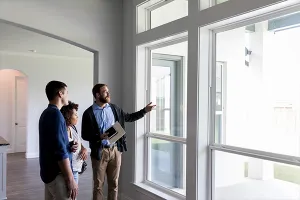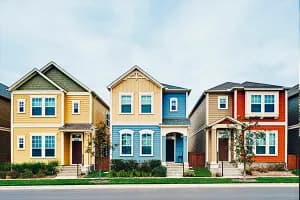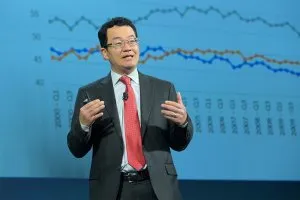The last two years have been tough for many people who work in home sales or who were in the market to buy or sell, but the worst may be over, Lawrence Yun, chief economist of the National Association of REALTORS®, told a crowd of real estate professionals during NAR NXT, The REALTOR®
Yun released a rosier forecast for the housing market for 2025 and 2026, with an outlook for higher home sales and moderating mortgage rates.
Also speaking at Friday’s Residential Economic Issues and Trends Forum, NAR’s Deputy Chief Economist Jessica Lautz shared new NAR data that looked at who’s buying homes today. The data shows growth in all-cash buyers, multigenerational purchases and single buyers.
On the selling side, homeowners are feeling richer from the rapidly rising prices of the past few years. Now, more listings are coming up for sale, and the economy is seeing improvement. All those factors could get more Americans moving in the year ahead, he said. Further, this week marked the conclusion of a contentious presidential election.
“We’ve seen after presidential elections—and it doesn’t matter who wins—that there’s usually a slight boost in home sales,” Yun said. “It removes some uncertainty. Now you know it’s the policy [of President Trump], and you can make predictions about what will happen and make a decision based on that.”
Here’s an overview of NAR’s predictions on key housing indicators for the year ahead.
Home Sales to Rise
With improving job numbers and recent gains in the stock market, more Americans may be motivated to act, Yun said. Yun predicts an uptick of nearly 2 million jobs for 2025 and another nearly 2 million increase in 2026, which could bode well for the housing market.
“2023 and 2024 were both difficult years in the housing market,” Yun said. But pending home sales eked out a 3% year-over-year gain in September, he said, a signal that is “maybe the worst is over.” Other good signs: Inventory of both new and existing homes is increasing, and the U.S. population has grown by 70 million from 1995, even though home sales have remained mostly at 1995 levels, signaling pent-up demand.
Here's Yun’s forecast over the next two years:
- 2025 sales projection: Existing home sales to rise 9% year-over-year; New home sales to jump by 11%.
- 2026 sales projection: Existing-home sales to rise 13% year-over-year; new home sales to increase by 8%.
Mortgage Rates to Moderate
The trajectory of mortgage rates will have a major bearing on how the housing market will fare, Yun said.
According to Freddie Mac, the average 30-year fixed-rate mortgage has ranged from 6.08% to 7.44% over the past 52 weeks. Yun says the rates should stabilize at the low end of that range for 2025 and 2026.
On Thursday, the Federal Reserve announced its second rate cut of the year, reducing its short-term benchmark rate by a quarter-point. The Fed is anticipated to reduce its interest rate an additional four times over the next year.
But hopeful buyers who may be waiting for lower mortgage rates likely won’t see that anytime soon, Yun said. “Mortgage rates will not decline in tandem” with the Fed’s rate cut, he said, blaming the bloated budget deficit as the reason. “With a large budget deficit, there’s less mortgage money available. The government is borrowing so much of its money. A large budget deficit will prevent mortgage rates from going down to 4%” as they did during President Trump’s first term.
Factors that could change Yun’s forecast: a reduction in the budget deficit, an easing of housing regulations are holding up home builders, or a significant increase in the labor force to help lower inflationary pressures. In such cases, “mortgage rates could come down quickly,” Yun noted.
Nevertheless, the “locked-in” effect of homeowners feeling stuck-in-place with 2% or 3% mortgage rates from recent years will lessen over time, Yun said. Yun pointed to the 3.5 million new babies being born each year as well as the 1.5 million marriages, 700,000 divorces, 3.5 million people turning 65, and 25 million job changes that take place each year—all milestones that often trigger real estate moves.
Home Prices Increases Slowly After Rapid Rises
While homeowners have enjoyed record-breaking equity gains, home buyers’ have been struggling with affordability. A typical homeowner has accumulated $147,000 in housing wealth just over the last five years, according to NAR’s research. As a result, the spread in median net worth between homeowners and renters continues to grow. It stands at $415,000 for homeowners versus $10,000 for renters, Yun said.
“The strong price increases cannot be sustainable for another five years, or America will be divided … with only a few getting to experience the tremendous housing wealth,” Yun said. “If we bring more supply to the housing market, home price increases will not be as outrageous … and will be more in line with wages.”
Yun’s forecast:
- 2025 median home price: $410,700; up 2% over 2024.
- 2026 median home price: $420,000, up 2% over 2025.
A Different Type of Buyer Emerges
The profile of home buyers are changing, Lautz said, presenting data from NAR’s newly released 2024 Profile of Home Buyers and Sellers. Here’s a few of the changes observed in the report:
- More buyers are skipping the mortgage. With the sizable housing equity gains many owners have experienced, all-cash buyers have surged to record highs, accounting for 26% of home sales over the past year. Thirty-one percent of repeat buyers paid all-cash for their next home purchase.
- First-time buyers are getting older. The median age of a first-time home buyer was 38, an all-time high. “They are having to save for a longer period of time or maybe wait for the ‘bank of mom and dad’ to give them” the funds to buy, Lautz said. Twenty-five percent of first-time buyers used a gift or loan from a relative or friend for their home purchase; 20% took money out of financial assets like stocks, 401ks or cryptocurrency to afford homeownership; and 7% used inheritance money for their purchase—a record high, Lautz noted. First-time buyers are coming up with the highest down payments in nearly 30 years—at 9%—in order to afford the higher home prices.
- The allure of cities grows. The pandemic may have unleashed a trend of suburban movers, but people are now heading back to city centers—the largest uptick in a decade, Lautz said.
- More buyers are pooling their money. The number of multigenerational households surged to an all-time high of 17% over the past year. “The number one reason is for cost savings,” Lautz said. “They’re combining incomes” in order to afford homeownership. They’re also buying a multigenerational home to take care of aging parents or because of young adults are moving back home, Lautz noted.
- Single women buyers continue to outpace single men buyers. A drop in marriage rates has triggered more consumers to enter the housing market on their own. Single women held a 24% share of the home-purchase market over the past year. For single men, it was 11%.









